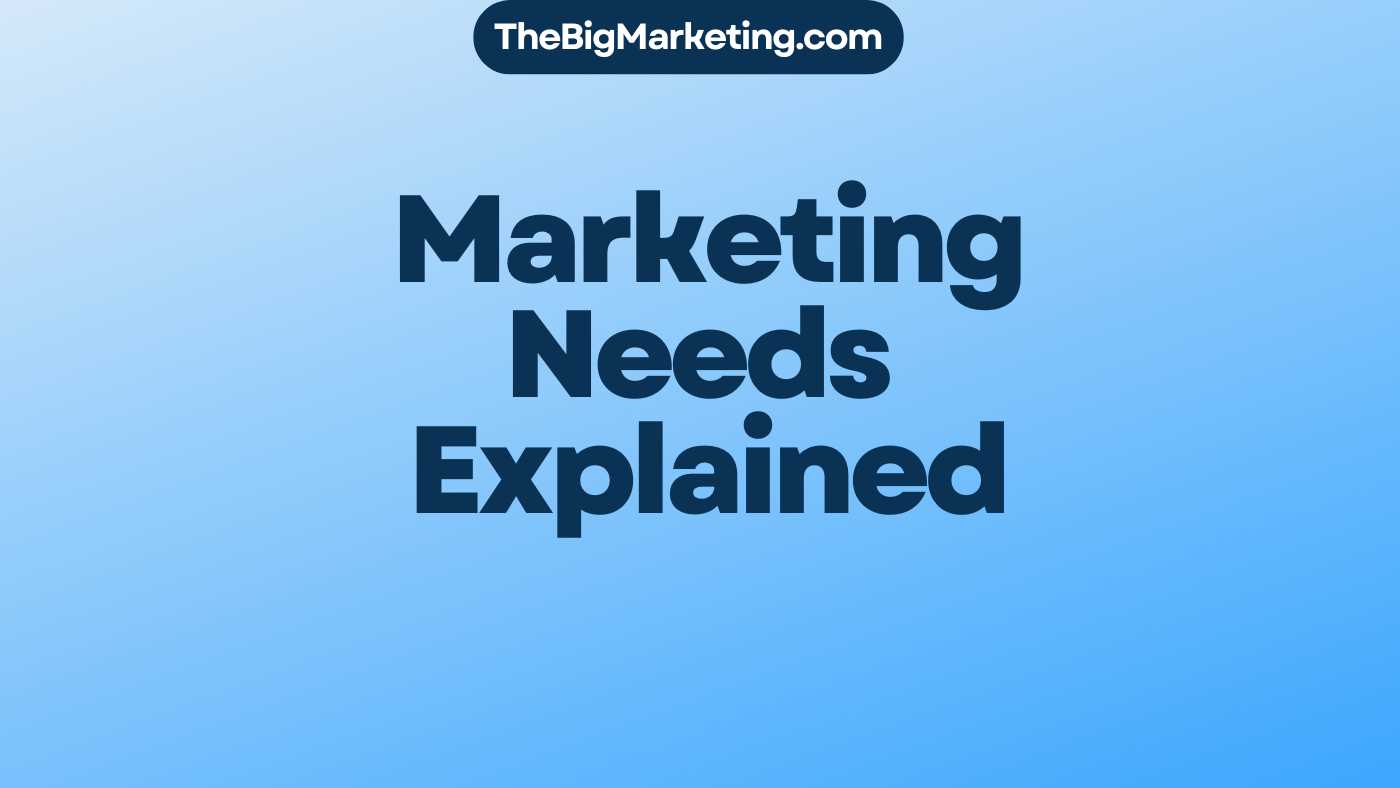The pharmaceutical industry is known for its influential marketing tactics, which shape our healthcare decisions. With an annual budget of £1.65 billion for marketing, the industry has significant influence over doctors and nurses in the UK. Additionally, the industry spends £3.3 billion annually on research, but the development of truly innovative drugs is limited. Negative trial results can be dismissed, while positive results are often published repeatedly. The industry also uses drug advertising to associate brands with emotional attributes, influencing healthcare professionals. The House of Commons health committee recommends establishing registries of gifts and honoraria received by medical professionals to promote transparency and regulate marketing practices.
Key Takeaways:
- Big Pharma marketing tactics heavily influence healthcare decisions.
- The industry’s marketing budget highlights its significant influence over healthcare professionals.
- Positive trial results are often overemphasized while negative results are downplayed.
- Drug advertising is used to create emotional associations with brands.
- The House of Commons health committee recommends transparency in the form of gift and honoraria registries.
The Impact of Pharmaceutical Advertising
Pharmaceutical advertising plays a significant role in shaping consumer behavior and healthcare decisions. In 2015, the pharmaceutical industry spent a record-breaking $5.4 billion on direct-to-consumer (DTC) ads in the United States, resulting in Americans spending a record $457 billion on prescription drugs.
DTC ads appear on various media platforms, with TV being the most prevalent. These ads aim to educate consumers about available treatments and empower them to make informed healthcare choices. However, DTC advertising has been a topic of controversy, garnering criticism and support from different perspectives.
Critics argue that pharmaceutical advertising drives up drug prices, influences unnecessary prescriptions, and erodes the patient-doctor relationship. They highlight the aggressive marketing tactics employed by pharmaceutical companies, which can lead to overuse of certain drugs and unnecessary healthcare costs. Additionally, they argue that DTC ads may overstate the benefits of medications while downplaying potential risks and side effects.
On the other hand, supporters assert that DTC ads play a crucial role in educating the public about health conditions and available treatment options. They argue that these ads empower consumers to have more informed conversations with their healthcare providers and actively participate in their own healthcare decisions. Supporters believe that DTC ads contribute to patient autonomy, as individuals are better equipped to ask their doctors questions and seek appropriate treatments for their health conditions.
Despite the controversies surrounding pharmaceutical advertising, it remains a powerful and influential marketing strategy within the healthcare industry.
Comparison of DTC Advertising in Different Media Platforms
| Media Platform | Total Ad Spending (in billions) |
|---|---|
| Television | $3.7 |
| Magazines | $1.0 |
| Radio | $0.3 |
| Newspapers | $0.2 |
| Internet | $0.2 |
As shown in the table above, television remains the dominant medium for pharmaceutical advertising, accounting for the majority of ad spending. This is followed by print media, radio, and online platforms.
Image: Pharmaceutical advertising plays a significant role in shaping consumer behavior and healthcare decisions.
The Power of Pharma Influencer Marketing
Influencer marketing has become an increasingly popular strategy for pharmaceutical companies to effectively reach their target audiences and build brand awareness. By partnering with influencers who have substantial reach and credibility, pharma companies can leverage their influence to promote their products and engage with their followers. This form of marketing offers unique advantages in the healthcare industry.
Building Positive Associations and Educating Audiences
One of the key benefits of pharma influencer marketing is the ability to create positive associations between the influencer and the brand. When an influencer endorses a pharmaceutical product, it lends credibility and trust, which can lead to increased brand recognition and customer loyalty. Influencers also have the power to educate and engage their audiences, providing valuable information about healthcare topics, treatment options, and the benefits of specific pharmaceutical products.
Strengthening Customer Relationships and Driving Sales
Influencer collaborations can help pharmaceutical companies establish and strengthen relationships with their target customers. By connecting with influencers who share similar values and have an audience that aligns with their target market, pharma companies can engage with potential customers on a more personal level. This engagement can lead to increased brand loyalty and ultimately drive sales. When influencers share their positive experiences with a pharmaceutical product, it can encourage their followers to explore and purchase the product themselves.
Selecting the Right Influencers and Crafting Compelling Messages
For a successful pharma influencer campaign, it is crucial for companies to carefully select influencers who have an authentic connection to the healthcare industry and can effectively resonate with their target audience. Influencers should possess the expertise and credibility needed to promote pharmaceutical products responsibly. Additionally, pharma companies must craft compelling messages that align with the influencer’s style and audience, ensuring they communicate the benefits of the product in an engaging and informative manner.
Measuring the Impact and Effectiveness
Measuring the impact and effectiveness of pharma influencer marketing campaigns is essential to gauge their success and make data-driven decisions for future strategies. Key performance indicators such as engagement rates, reach, conversions, and sales can provide valuable insights into the campaign’s effectiveness. By analyzing these data points, pharma companies can refine their influencer marketing strategies, optimize their messaging, and allocate their resources more efficiently.
| Influencer Marketing Benefits for Pharma Companies | Key Advantages |
|---|---|
| Increased brand awareness and recognition | 01 |
| Engagement with a targeted audience | 02 |
| Educating and influencing consumers | 03 |
| Strengthened customer relationships | 04 |
| Enhanced brand loyalty and advocacy | 05 |
| Increased sales and revenue | 06 |
Strategies for Successful Pharma Influencer Campaigns
In order to run successful influencer campaigns in the pharma industry, companies should follow specific strategies. Firstly, it is crucial to identify the right influencers who have the relevant audience and are aligned with the brand’s values. Choosing influencers who already have a strong presence in the healthcare industry ensures that their content will resonate with their followers and have a higher likelihood of driving engagement and conversions.
Key Factors to Consider when Selecting Pharma Influencers
| Factors to Consider | Explanation |
|---|---|
| Relevance | Ensure that the influencer’s content aligns with the pharmaceutical brand and its target audience, such as healthcare professionals or patients. |
| Expertise | Look for influencers who have a deep understanding of the healthcare industry and can provide valuable insights and expertise. |
| Engagement | Analyze the influencer’s engagement rate to determine their ability to connect with their audience and drive meaningful interactions. |
| Authenticity | Choose influencers who demonstrate authenticity and transparency in their content, as this builds trust with their followers. |
| Compliance | Ensure that influencers adhere to regulatory guidelines and guidelines set forth by the pharmaceutical industry, such as proper disclosure of sponsored content. |
Once the right influencers have been identified, companies should focus on creating a clear and compelling message that resonates with the influencer’s followers. The content should be informative, engaging, and provide value to the target audience. By crafting content that educates and empowers followers, pharmaceutical brands can position themselves as thought leaders in the industry and build trust with potential customers.
Setting realistic goals and expectations for the influencer campaign is essential. Companies should establish measurable objectives, such as increasing brand awareness, driving website traffic, or generating sales. By defining clear goals, companies can monitor the success of the campaign and make data-driven adjustments to optimize results.
Measuring the impact of the influencer campaign is crucial for understanding its effectiveness. Companies should track key metrics such as the number of clicks, engagement rate, reach, and conversions. By analyzing this data, they can determine the campaign’s return on investment and identify areas of improvement for future campaigns.
In conclusion, by implementing these strategies, companies can maximize the effectiveness of their influencer marketing campaigns in the pharmaceutical industry. Identifying the right influencers, creating compelling content, setting realistic goals, and measuring the campaign’s impact are key steps to drive success and achieve desired outcomes in healthcare marketing.
Measuring the Impact of Pharma Influencer Marketing
Measuring the impact of influencer marketing is crucial to evaluate the effectiveness of a campaign. By tracking the reach and engagement of influencer posts, companies can determine the campaign’s reach and identify areas for improvement. Additionally, measuring the impact of influencer marketing on business outcomes is essential.
Sales and leads generated as a result of the campaign can provide valuable insights into its effectiveness. By analyzing these metrics, companies can assess the campaign’s impact on revenue and customer acquisition. This data can inform future marketing strategies and investment decisions.
Furthermore, customer feedback and satisfaction play a significant role in evaluating the success of influencer marketing. By collecting and analyzing feedback from customers who have interacted with the campaign, companies can gauge its effect on brand loyalty and customer satisfaction.
Tracking Reach and Engagement
One way to measure the impact of influencer marketing is by tracking the reach and engagement of influencer posts. This involves monitoring the number of views, likes, comments, and shares that the posts receive. With this data, companies can determine the level of audience engagement and the campaign’s overall reach.
Evaluating Sales and Leads
Assessing the impact of influencer marketing on sales and leads is crucial for understanding its effectiveness. By analyzing data on the number of sales or leads generated as a result of the campaign, companies can determine the campaign’s impact on business outcomes. This information is valuable for measuring return on investment and optimizing future marketing efforts.
Collecting Customer Feedback
Customer feedback is a vital source of information for evaluating the success of influencer marketing. By collecting feedback from customers who have interacted with the campaign, companies can gain insights into the campaign’s effect on brand perception, customer satisfaction, and loyalty. Analyzing this feedback allows companies to make data-driven decisions and refine their marketing strategies.
An Example of Measuring the Impact
| Influencer | Reach | Engagement | Sales | Customer Feedback |
|---|---|---|---|---|
| Instagram Influencer A | 500,000 | 10,000 | 100 | Positive feedback indicating increased brand loyalty |
| YouTube Influencer B | 1,000,000 | 20,000 | 150 | Mixed feedback indicating room for improvement |
| TikTok Influencer C | 2,000,000 | 30,000 | 200 | Positive feedback indicating increased brand awareness |
Table: Example of measuring the impact of influencer marketing
The Controversy Surrounding DTC Ads
The use of direct-to-consumer (DTC) ads in the pharmaceutical industry has stirred controversy. Critics argue that these ads can provide misleading or false information, threaten public health, and fail to adequately disclose the risks associated with the advertised drugs. These ads are also believed to drive up healthcare costs by encouraging the use of expensive treatments. However, supporters argue that DTC ads educate the public about health conditions and treatments, promote communication between patients and healthcare providers, and remind patients to take their medications.
Arguments Against DTC Ads
One of the main concerns raised by critics is that DTC ads can be misleading or provide incomplete information about the advertised drugs. These ads often focus on the benefits of a medication while downplaying or omitting information about potential side effects or risks. This lack of transparency can lead to uninformed decision-making by consumers and potentially harmful outcomes.
Another issue is the increasing cost of healthcare attributed to DTC ads. Critics argue that by promoting expensive brand-name drugs directly to consumers, these ads contribute to rising healthcare expenses. The push for expensive treatments can strain healthcare budgets and limit access to more affordable alternatives.
Arguments in Favor of DTC Ads
Supporters of DTC ads believe that they play a vital role in educating the public about health conditions and available treatment options. These ads raise awareness and encourage individuals to seek medical advice, leading to earlier detection and intervention for certain conditions. By increasing patient engagement, DTC ads can improve overall health outcomes.
Additionally, DTC ads can facilitate communication between patients and healthcare providers. When patients are informed about specific medications, they can have more meaningful discussions with their doctors, leading to better-informed treatment decisions. DTC ads act as a reminder for patients to discuss potential treatment options with their healthcare providers.
| Arguments Against DTC Ads | Arguments in Favor of DTC Ads |
|---|---|
| Misleading or incomplete information | Education about health conditions |
| Threat to public health | Promotion of patient-provider communication |
| Increased healthcare costs | Reminder for patients to discuss treatment options |
The Influence of DTC Ads on Consumer Behavior
DTC ads play a pivotal role in shaping consumer behavior, with significant implications for pharmaceutical advertising, healthcare marketing, and pharmaceutical branding. Studies have shown that these ads have a powerful influence on consumers, driving them to take action and make informed healthcare decisions.
According to research, approximately two-thirds of adults take some form of action after being exposed to a drug or device advertisement. This may include scheduling an appointment with their healthcare provider or seeking more information about a specific medication.
The effectiveness of DTC ads can be attributed to the confidence and trust that consumers place in them. When individuals see these ads, they often develop a sense of familiarity and connection with the promoted brand, leading them to request specific drugs from their healthcare providers.
Additionally, the impact of DTC ads on drug sales cannot be ignored. Drugs that are featured in direct-to-consumer advertisements tend to experience a significant increase in sales compared to drugs that are not advertised directly to consumers. This suggests that these ads have a strong influence on consumer decisions and purchasing behavior.
Overall, the influence of DTC ads on consumer behavior highlights the importance of strategic and effective pharmaceutical advertising and healthcare marketing. By creating compelling and informative advertisements, pharmaceutical brands can not only capture the attention of consumers but also shape their perceptions and decisions regarding healthcare options.
| DTC Ads and Consumer Behavior | Percentage |
|---|---|
| Percentage of adults taking action after seeing a drug or device ad | 66% |
| Percentage of adults making an appointment with their doctor after seeing a drug or device ad | 40% |
| Percentage increase in drug sales for drugs featured in DTC ads | Significant |
The data presented in the table underscores the impact of DTC ads on consumer behavior and the crucial role they play in pharmaceutical branding and marketing. Understanding and leveraging this influence can enable pharmaceutical companies to develop effective advertising strategies that resonate with consumers and drive positive outcomes.
The Misleading Nature of Drug Ads
The pharmaceutical advertising industry has come under scrutiny for the potentially misleading and false claims made in drug ads. Consumer Reports conducted a review of 168 drug ads and found that 57 percent of the claims were potentially misleading, while 10 percent were entirely false.
These misleading advertisements can have detrimental effects on patients and their healthcare decisions. Patients may be inclined to seek expensive treatments promoted in these ads, even when less costly or alternative options may be available. Furthermore, drug companies often prioritize advertising newer, more expensive drugs, despite older drugs being equally effective and safer.
This raises concerns about the need for stricter regulations and greater transparency in the pharmaceutical advertising industry. Patients deserve accurate and reliable information to make informed decisions about their healthcare.
Examples of Misleading Claims in Drug Ads
| Ad Claim | Nature of Misleading Information |
|---|---|
| Drug X cures all types of cancer | Exaggerated statement about the drug’s effectiveness |
| Drug Y has no side effects | Inaccurate claim regarding the drug’s safety profile |
| Drug Z is the only treatment for depression | False statement suggesting the drug is the sole option for treating depression |
Stricter regulations and improved transparency would help protect patients from misleading information and ensure that pharmaceutical advertising aligns with the highest ethical standards.
Big Pharma’s TV Ad Spending
Big Pharma allocates a substantial portion of its marketing budget to TV advertising, making it one of the most prominent platforms for pharmaceutical advertising. CBS, ABC, NBC, and Fox are the primary beneficiaries of this advertising expenditure, capturing the majority of the industry’s budget. These networks provide extensive reach and visibility for pharmaceutical brands seeking to engage with a broad audience.
TV ads for pharmaceutical products focus on targeting specific health conditions that affect a significant portion of the population. Common themes include erectile dysfunction, arthritis pain, and blood thinners, aiming to address prevalent health issues. This strategic approach ensures that the ads capture the attention of viewers who may be seeking solutions for these specific conditions.
Television remains a popular medium for pharmaceutical advertising, especially among older audiences who are more likely to be regular TV viewers. This demographic is a key target for pharmaceutical sales, given their increased healthcare needs. Therefore, TV ads provide a valuable opportunity to engage and educate this particular audience segment.
In 2015, pharmaceutical companies invested approximately $4 billion in TV ads, solidifying its status as a vital channel for healthcare marketing and pharmaceutical sales. Magazines followed closely behind, with around $1.5 billion in spending. Other forms of advertising, such as newspapers and billboards, received a significantly smaller share of the budget due to their limited reach and impact.
TV Ad Spending by Pharmaceutical Companies (2015)
| Media Platforms | Advertising Spending (in billions) |
|---|---|
| TV | $4.0 |
| Magazines | $1.5 |
| Newspapers | $0.2 |
| Billboards | $0.1 |
The Role of Influencers in TV Ads
In the world of pharmaceutical advertising, influencers play a significant role in TV ads. By collaborating with influential individuals to promote specific drugs or medical devices, pharmaceutical companies can tap into the trust and credibility that these influencers have established with their followers.
TV networks like CBS, ABC, NBC, and Fox understand the power of targeting specific age demographics through their programming. This makes television an ideal platform for reaching the target audience of certain drugs or devices. Pharma companies recognize the importance of reaching the right audience and choose TV as a powerful medium for quickly reaching a large number of people.
When influencers endorse pharmaceutical products or share their personal experiences with healthcare treatments, it resonates with their followers on a more personal level, creating a sense of trust and connection. This can significantly impact consumer behavior, as viewers are more likely to trust and consider products recommended by influencers they admire and trust.
The use of influencers in TV ads also provides an opportunity for pharma companies to align their products with influential individuals who share similar values and beliefs. This association can enhance the credibility and reputation of the products, further influencing consumer decision-making.
Overall, the role of influencers in TV ads demonstrates the power of leveraging trusted personalities to reach and connect with target audiences in the pharmaceutical advertising landscape. With the right influencers and compelling messaging, pharmaceutical companies can effectively promote their products and drive positive outcomes in healthcare marketing and pharmaceutical sales.
| TV Network | Target Age Demographic | Viewership Reach |
|---|---|---|
| CBS | 45-64 | XX million |
| ABC | 18-34 | XX million |
| NBC | 35-54 | XX million |
| Fox | 18-49 | XX million |
The Future of Pharma Marketing
The future of pharmaceutical marketing is undergoing a significant transformation due to the influence of digital platforms and technology. As consumers increasingly turn to digital channels for accessing healthcare information, pharma companies are adapting their marketing strategies to effectively engage with their target audiences.
One key aspect of this shift is the use of social media influencers to promote pharmaceutical products. By partnering with influencers who have a strong online presence and a dedicated following, companies can reach a wider audience and establish trust and credibility.
Another essential component of the future of pharma marketing is the utilization of online advertisements. With targeted ad campaigns, companies can reach specific demographics and tailor their messages accordingly. This precision targeting allows for more effective communication and engagement with potential customers.
Additionally, targeted email campaigns have become a valuable tool in pharmaceutical marketing. By sending personalized and relevant content directly to consumers’ inboxes, companies can foster a deeper connection and generate higher levels of engagement.
Data analytics and artificial intelligence (AI)
Data analytics and AI will play a crucial role in the future of pharma marketing. These technologies enable companies to gather and analyze vast amounts of data, gaining valuable insights into consumer behaviors, preferences, and needs. By leveraging these insights, companies can deliver highly personalized marketing campaigns that resonate with individual customers.
The use of AI-powered chatbots and virtual assistants in healthcare settings is also expected to increase. These intelligent tools can provide personalized recommendations, answer frequently asked questions, and offer support to patients, making healthcare more accessible and convenient.
Furthermore, the integration of telemedicine platforms and virtual consultations is revolutionizing the way healthcare is delivered. Pharma companies can explore partnerships with these technologies to promote their products and services, reaching patients in the comfort of their own homes.
In summary, the future of pharma marketing lies in leveraging digital platforms, embracing technology, and enhancing personalization. By adopting these strategies, pharmaceutical companies can effectively engage with their target audience, deliver tailored messages, and make a meaningful impact in the evolving healthcare landscape.

Conclusion
Influencer marketing has emerged as a powerful tool for the pharmaceutical industry to effectively connect with consumers, cultivate brand awareness, and drive positive outcomes. By implementing well-defined strategies that encompass identifying suitable influencers, crafting compelling messages, establishing realistic goals, and diligently measuring campaign impact, pharma companies can optimize the effectiveness of their marketing endeavors.
Nevertheless, the use of direct-to-consumer (DTC) ads and the influence of pharmaceutical marketing remain subjects of contentious debate, emphasizing the need for stricter regulations and transparency. As the healthcare landscape continually evolves, it becomes imperative for pharma companies to capitalize on influencer marketing and remain at the forefront of digital trends.
By leveraging the expertise and credibility of influencers, pharma companies can effectively reach their target audience, engage with them authentically, and establish positive associations with their brands. Moreover, influencer marketing facilitates the development of meaningful customer relationships, leading to enhanced loyalty and increased sales.
The ever-changing healthcare landscape presents dynamic challenges and opportunities for the pharmaceutical industry. To achieve long-term success, companies must adapt their marketing strategies, harness the power of influencer marketing, and stay ahead of digital trends. By embracing these essential elements, pharma companies can drive impactful marketing campaigns and confidently navigate the evolving healthcare landscape.
FAQ
What are some influential marketing tactics used by big pharma?
Big pharma utilizes various tactics such as direct-to-consumer advertising, influencer marketing, and traditional TV ads to shape consumer behavior and promote their products.
How much does the pharmaceutical industry spend on marketing?
The pharmaceutical industry spends billions of dollars annually on marketing efforts, with significant budgets allocated to advertising, research, and development.
What impact does pharmaceutical advertising have on consumer behavior?
Pharmaceutical advertising plays a significant role in shaping consumer behavior, as ads can influence the choice of medications and drive up the demand for specific drugs.
How do influencers contribute to pharmaceutical marketing?
Influencers play a vital role in pharmaceutical marketing, as their endorsement of products creates positive associations and helps build brand awareness and loyalty.
What strategies can ensure successful influencer campaigns in the pharmaceutical industry?
To run successful influencer campaigns in pharma, companies should identify the right influencers, create compelling messages tailored to their audience, set realistic goals, and measure the impact of the campaign.
How can the impact of influencer marketing be measured in pharma?
The impact of influencer marketing in pharma can be measured by tracking reach and engagement metrics, assessing sales and leads generated, and evaluating customer feedback and satisfaction.
What controversies surround direct-to-consumer (DTC) ads in the pharmaceutical industry?
DTC ads in the pharmaceutical industry are controversial due to potential misleading information, insufficient disclosure of risks, and their role in driving up healthcare costs.
How do DTC ads influence consumer behavior?
DTC ads have a significant impact on consumer behavior by stimulating action, such as making appointments with healthcare providers and requesting specific drugs.
How misleading are drug ads in the pharmaceutical industry?
Many drug ads have been found to be potentially misleading, containing false claims that can lead patients to seek expensive treatments without considering more affordable or safer alternatives.
How much does the pharmaceutical industry spend on TV advertising?
The pharmaceutical industry spends billions of dollars on TV advertising annually, with major networks like CBS, ABC, NBC, and Fox receiving the majority of the advertising budget.
What role do influencers play in TV ads for pharmaceutical products?
Influencers are often used in TV ads for pharmaceutical products to leverage their credibility and reach specific age demographics, making TV a powerful medium for reaching the target audience.
What does the future hold for pharmaceutical marketing?
The future of pharmaceutical marketing is expected to be heavily influenced by digital platforms and technology, including social media, data analytics, and personalized marketing strategies.




